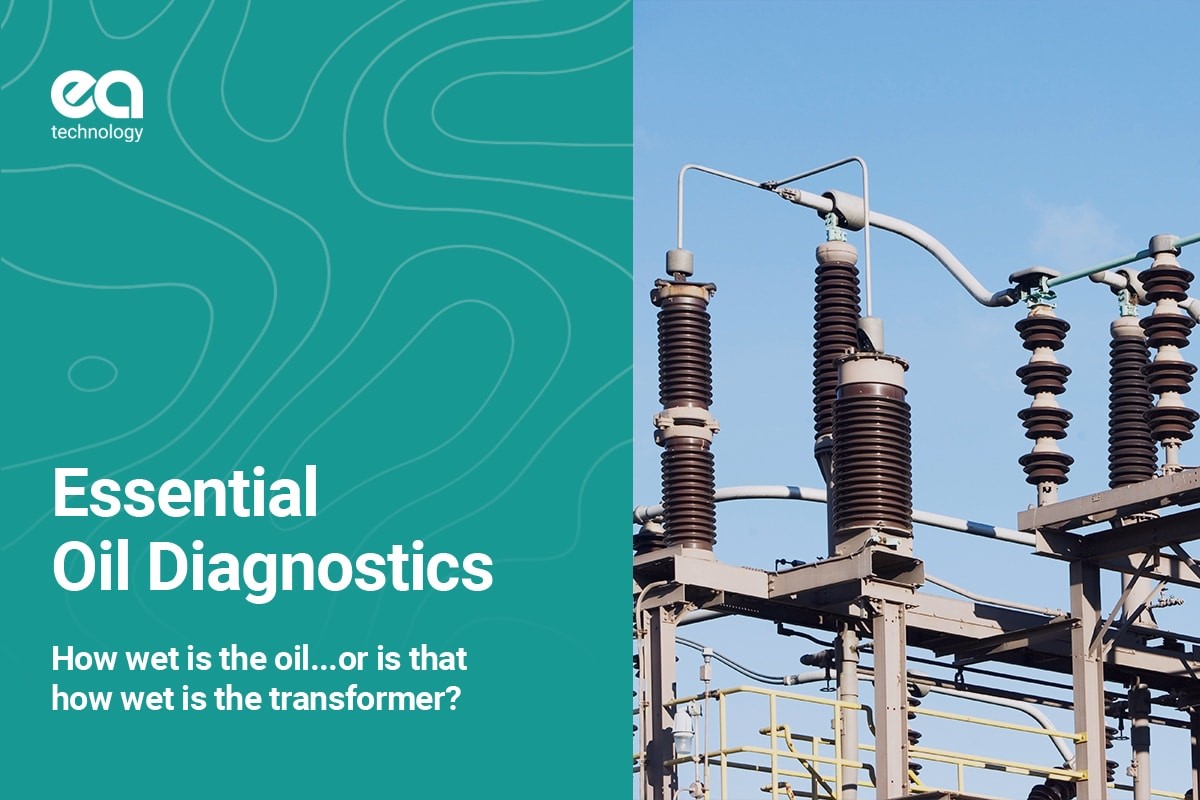How Wet is the Oil…or is that How Wet is the Transformer?
-
23 February 2021
-
EA Technology

Our next blog takes us onto moisture content, which forms part of the basic oil quality assessment (along with acidity & BDV) on any insulating medium such as mineral oil.
The moisture content of an oil should be determined in accordance with the IEC 60814: Insulating liquids. Oil-impregnated paper and pressboard. Determination of water by automatic coulometric Karl Fischer titration methodology by use of direct injection technique. Essentially the oil sample is injected directly into the titration cell where the electrode determines the moisture content of the oil.
There are couple of key points to understand when it comes to moisture content and if you recall a few blogs back, in our first blog of the series the importance of that oil temperature during sampling will become evident!
Wet Oil or Wet Transformer?
When it comes to the moisture content of the oil we are not actually determining how wet the oil is but trying to understand how wet the transformer is. The reason behind this is that approximately 90% of the moisture inside a transformer is held within the paper insulation covering the windings. As the temperature rises within the asset (ambient or loading) the moisture migrates from the paper insulation out into the oil and this is why the flowing temperature of the oil during sampling is critical to understand the moisture content.
The temperature of the oil recorded during sampling is used to correlate the determined absolute moisture content to 20°C moisture content (temperatures of 20°C or less are not correlated) to enable interpretation of the oil to take place. Interpretation of the moisture content and correlation calculation is detailed in IEC 60422: Mineral insulating oils in electrical equipment — supervision and maintenance guidance. It is important to understand that this is a guidance document and many companies apply their own threshold levels. Laboratories will assess the moisture in line with IEC 60422 but will also be taking other oil results into consideration. Don’t forget those Midel / Ester fluids have a much higher tolerance to moisture and thresholds are as high as 400ppm and they are assessed against IEC 61203.
It is important to understand whether your reports have the absolute moisture content or the correlated moisture content on them, it is more than likely the correlated moisture content is at 20°C. To ensure transparency, EA Technology reports both moisture contents on all reports so you actually get two moisture results.
Why is moisture content important?
It is important to understand the moisture content of the oil and to keep it low or within acceptable limits, as a high moisture content damages the paper insulation. Preventing premature paper degradation due to excessive moisture within the asset will ultimately help to extend the life of an asset and keep the big grey box humming along happily.
A high moisture content also reduces the dielectric quality of the oil and as a result can reduce the breakdown voltage strength of the oil, a low moisture content also assists in preventing bubble formation and potential PD activity.
What’s the solution… ?
There are a number of well established companies out there that specialise and carry out oil treatment and purifications, so if you have a raised moisture content and it is starting to effect the asset then there is a solution for you. It should be noted that simply changing the oil will not resolve the high moisture content, the unit would most likely need a hot drying process on the oil to remove the moisture from the paper insulation.
The assets should also be checked for sources of moisture ingress such as poor or damaged seals and breathers etc. If there’s a route in, moisture will find it and you could end up with a wet transformer once again down the road.
Before any treatment is looked into or carried out it is always recommended and a good idea to re-sample the unit to ensure the oil is actually wet and that it is not contamination picked up during sampling, after all the UK does like its rain!
